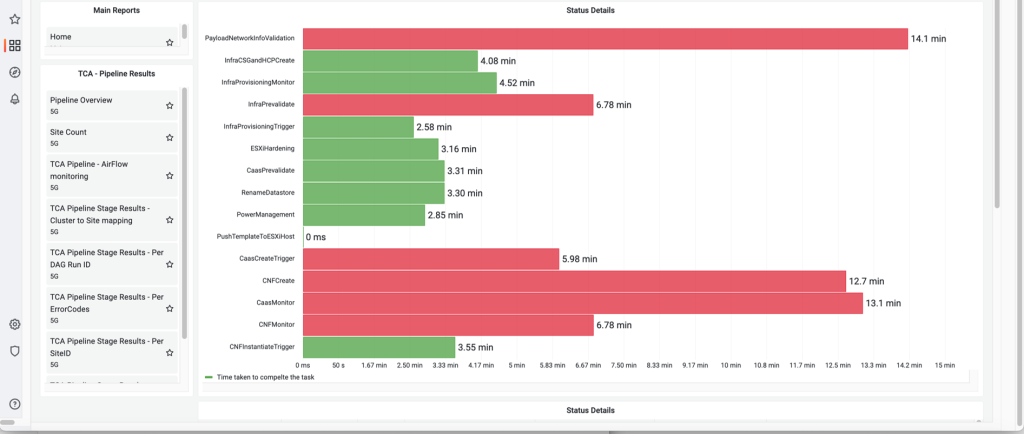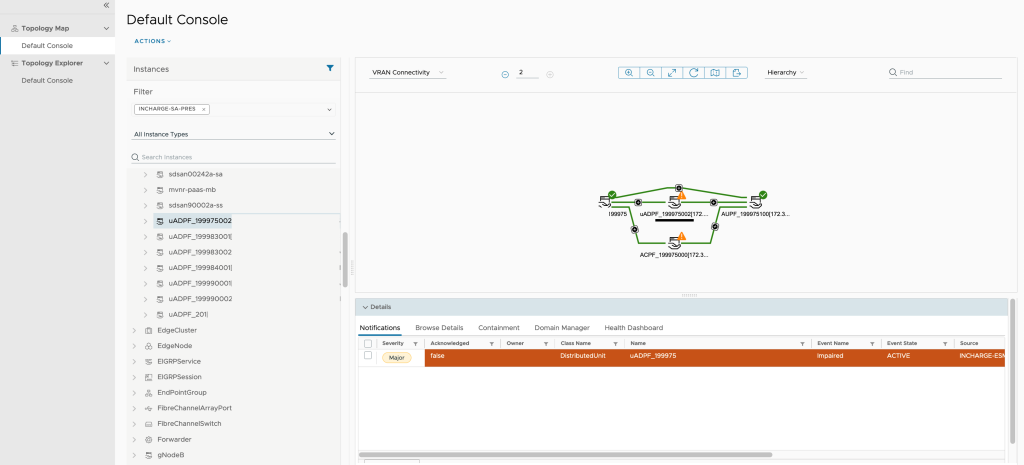Part one, of two-part series.
The transformation from physical infrastructure to virtualized infrastructure is changing the way that communication service providers (CSPs) operate their networks end-to-end to deliver innovative 5G services. Deep network insights play a vital role in upholding high network performance, meeting SLAs, and enhancing customer experiences. The service assurance capabilities from VMware by Broadcom, designed for 4G and 5G networks, empower you to gain a comprehensive understanding of how your network is performing by providing multi-layer visibility, fault monitoring, and performance optimization.
Gaining full knowledge of your network involves having clear visibility into network functions, underlying virtual infrastructure, physical servers, routers, switches, and firewalls. Clear insights are crucial for performance optimization, capacity planning, security compliance, and resource efficiency. With its service assurance capabilities, VMware enables intelligent monitoring of the entire network, from Core and RAN to WAN.
This blog post, which is part one of a two-part series demonstrating the significance of end-to-end cross-domain assurance in the network, covers the following topics:
- Pipeline monitoring for network deployments
- Discovery and topology mapping of the entire network
Architecture
The following diagram illustrates how the telco cloud solutions from VMware — including our horizontal platform, telco automation, and service assurance — interoperate to streamline operations.
With the service assurance capabilities, you gain insights into your network, including the following:
- Commercial-off-the-shelf (COTS) hardware
- Horizontal platform provided by VMware Telco Cloud Platform
- Network functions
- IP and transport networks
Telco Cloud Platform offers two key capabilities for hosting the network functions: the underlying virtual infrastructure layer to host virtual machines, and the containers-as-a-service (CaaS) layer to host containers. These capabilities cater to 4G and 5G network functions in different form factors.
Service assurance works with the telco automation capabilities from VMware to exchange the information required for topology discovery and pipeline monitoring. The telco automation capabilities serve as the Network Function Virtualization Orchestrator (NFVO) and Virtual Network Functions Manager (VNFM) as defined by the NFV ETSI architecture for the lifecycle management of the network infrastructure.
The service assurance capabilities collect discovery and monitoring information from physical infrastructure and the transport networks from physical layer collectors while collecting data from the virtual infrastructure layer and the CaaS layer from VMware vSphere and VMware Aria Operations. The service assurance capabilities also interoperate with network Element Management Systems (EMS) from various partners to obtain data associated with the network functions.
Pipeline Monitoring
VMware brings in advanced telco automation capabilities with Workflow Hub. It automates the entire end-to-end deployment and lifecycle of core and RAN sites by grouping sequences of tasks into pipelines.
For example, setting up a RAN cell site would typically include the following sequence of tasks that are grouped into a pipeline:
- Configuring BIOS settings for COTS hardware
- Installing VMware ESXi on COTS hardware
- Creating a worker node pool for the CaaS workload cluster
- Deploying the vDUs and vCUs as containerized network functions (CNFs)
The service assurance capabilities monitor these pipelines and present vital information through comprehensive dashboards. You can see the status of the pipelines as well as the tasks within each pipeline. In the event of task failures, the dashboard displays the error messages with detailed information about the failures so the Network Operations Center (NOC) or Service Operations Center (SOC) operators can make well-informed decisions by pinpointing the issue at a stage in the pipeline.
The service assurance capabilities let you effectively track the run times of the tasks within the pipeline. Through a dashboard displaying this information, you can quickly detect deviations in the run times of the pipeline tasks. By proactively identifying the tasks that deviate from the normal run times, you can investigate and address potential issues without having to wait for tasks to time out. This proactive and prompt resolution of the issues helps you deploy the sites at scale with confidence.

You can also generate reports on a per-site basis so you can gain a deeper understanding of the efficacy of the pipeline runs at a site. Based on these reports, you can enhance the pipelines and optimize your operational agility and service time-to-market.
Discovery and Topology Mapping
Once the network is deployed, gaining a deeper insight into how your network is constructed becomes imperative to optimize operations. The service assurance capabilities gather essential information from multiple components to discover different elements within the network and construct a topology-based diagram, which shows the interconnectivity across the network.
The discovery process encompasses multiple layers of the network — the Internet Protocol (IP) and transport networks, physical COTS hardware, virtual infrastructure layer, CaaS clusters, and the network functions. By utilizing a different data collector at each layer, you can gain separate and precise insights for each layer. The service assurance capabilities then establish correlations between different layers and construct a clear, interconnected topology map so you can view the relationship between multiple logical entities at various layers. This extensive topology mapping lets you view each layer, starting from a high-level overview with a site topology map down to a detailed view, such as the container or Kubernetes service level. Each topology view enables you to fully understand the correlation and connectivity with other elements in the network.

The correlation derived from this mapping includes associations, such as identifying the CaaS worker node hosting a network function or the container corresponding to a particular network function or the network port group details of the worker node. The detailed topology map, which displays the near real-time status of the complete network, helps you quickly pinpoint the scope of errors so you can focus your troubleshooting efforts and more efficiently manage the network.
Conclusion
The service assurance capabilities from VMware enable you to gain insights into the design and deployment phase of a 4G or 5G network with multi-vendor network functions running on VMware Telco Cloud Platform. Through its pipeline monitoring, discovery, and topology mapping capabilities, the horizontal platform facilitates seamless deployment of the network and simplifies operations.
In the next part of this blog series, we will outline the fault and performance management, root-cause analysis, and closed-loop remediation of the service assurance capabilities that are key contributors to providing multi-layer and multi-vendor cross-domain service assurance for the network.
For more information, visit our website.
Discover more from VMware Telco Cloud Blog
Subscribe to get the latest posts sent to your email.








